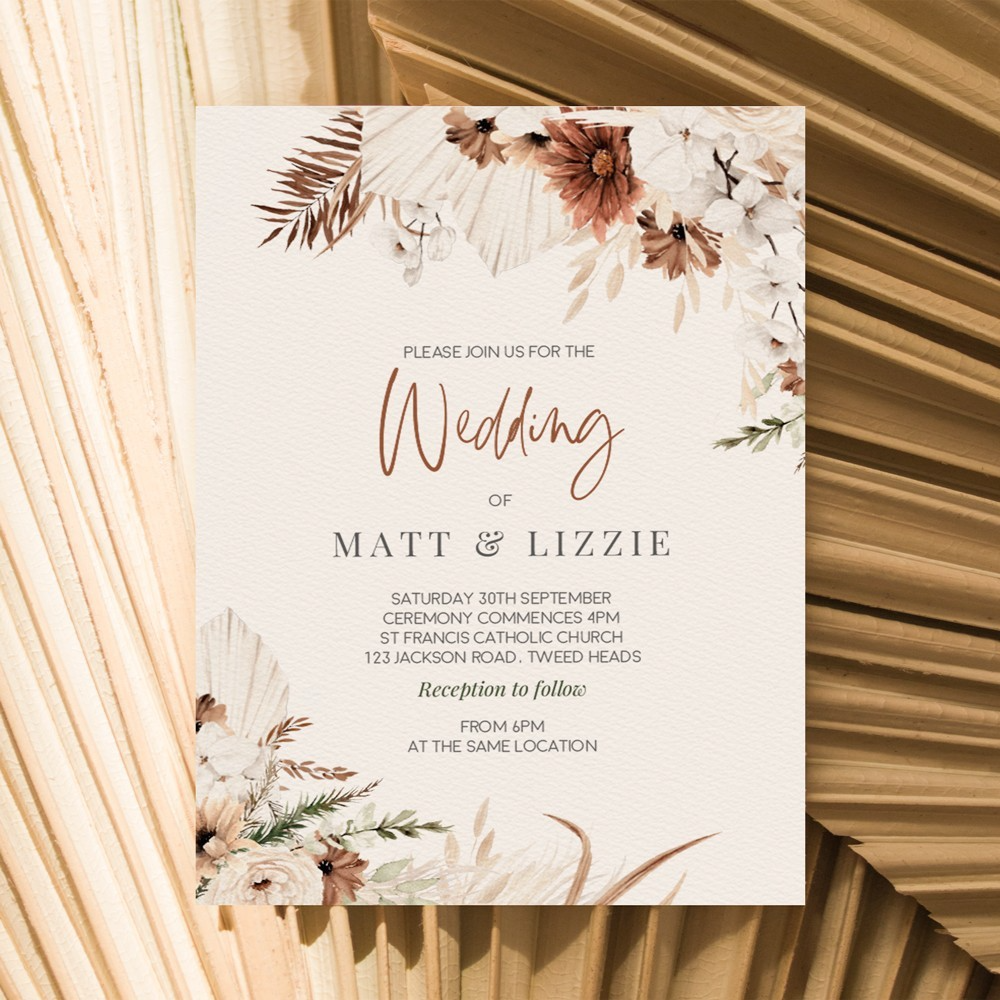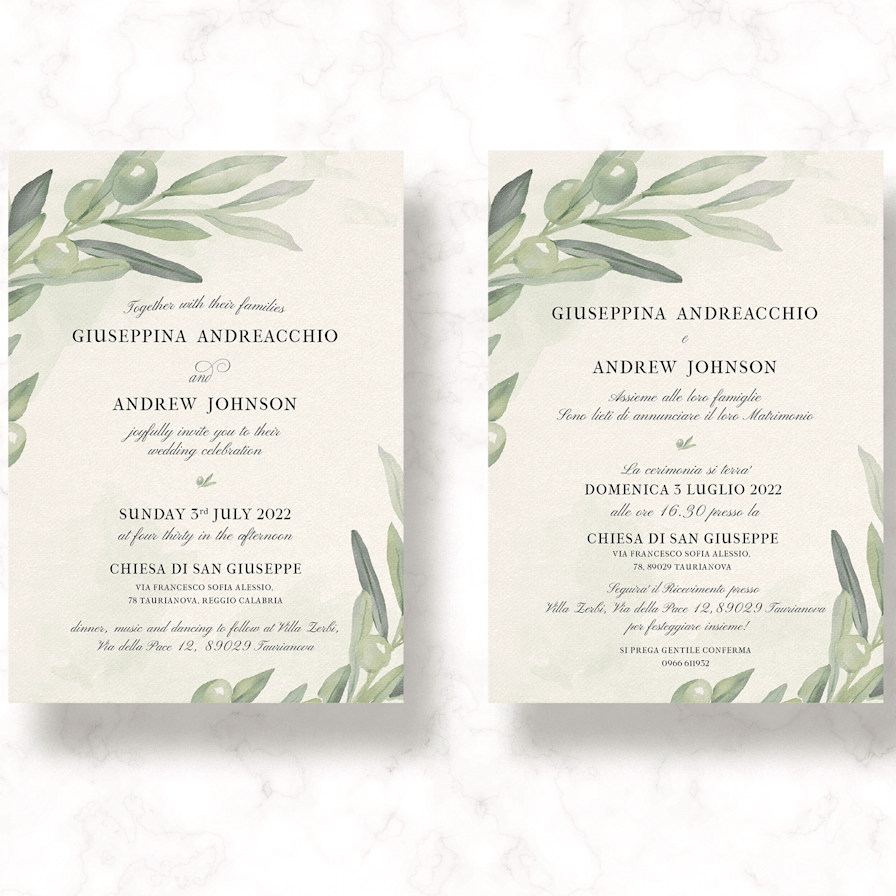Planning for timing advance wedding invites
When you are preparing for your wedding, managing invitations can be a daunting task. Properly timing the distribution of your wedding invites is crucial for ensuring your guests have ample time to respond and for you to finalize your guest list. Here’s a step-by-step guide on how far in advance wedding invites:
- Save the Date Notices: Begin with ‘Save the Date’ notices. Ideally, send these out at least 4 to 6 months before the wedding. This step is not mandatory but highly recommended, especially if you are planning a destination wedding or your big day coincides with a holiday season. It allows guests to mark their calendars and make necessary travel arrangements.
- Official Invitations: Dispatch your official wedding invitations around 1.5 to 2 months before the actual day. This window of time is the sweet spot—it’s not so early that people forget, nor so late that it seems an afterthought or rush.
- Final Confirmations: As your wedding day approaches, get final RSVPs from your guests. Set a deadline for RSVPs around 3 to 4 weeks before your wedding to give yourself enough time to make any last-minute adjustments.
- Reminders: A week before the wedding, send out reminders through emails, SMS, or social media to ensure everyone is on the same page. This accounts for any last-minute confirmations or dropouts.
Remember, each couple’s situation may differ; thus, adjust these guidelines to fit your unique circumstances. For instance, if many of your guests live overseas, you may need to send advance wedding invites even earlier. The goal is to make your guests feel valued and give them enough notice to make plans to celebrate your special day with you.

Essential Points about ‘Save the Date’ Invitations
When planning a wedding, the ‘Save the Date’ notice is a foundational step in your invitation strategy. Here are some essential points to consider for ‘Save the Date’ invitations:
- Timing: Send these notices out at least 4 to 6 months before your wedding. This early notice helps guests to plan especially if they need to arrange travel or take leave from work.
- Content: Include basic information such as the wedding date and location. At this stage, detailed logistics or schedule is not necessary. It’s more about ensuring your guests mark their calendars.
- Medium: ‘Save the Date’ invitations can be sent through various platforms. Physical cards are traditional and personal, while digital means like emails or social media events are fast and cost-effective. Consider your guests’ preferences and convenience.
- Personalization: Adding a personal touch, such as a photo of the couple or a thematic design reflecting the wedding style, can make these invitations more memorable.
- Follow-Up: Remember, ‘Save the Date’ is a preliminary reminder. You’ll need to send a formal invitation with more details closer to the event. Make sure to state clearly that a detailed invitation will follow.
These points will ensure your ‘Save the Date’ invitations perform their role efficiently and set the tone for your big day.
Invitations Distribution: Best Practices
Sending out advance wedding invites requires tact and timing to ensure guests feel honored and respected. Based on a blend of personal experience and advice from online forums, here are best practices for distributing your wedding invitations:
- Start Early: Aim to send invitations about 1.5 to 2 months before your wedding day. This timing shows consideration, giving guests enough space to plan.
- Personal Touch: If possible, choose physical cards for a personal touch. Personalize them to make your guests feel special.
- Cover All Bases: For distant friends or tech-savvy guests, complement with digital tools like email or social media. This can act as a preliminary invite or a reminder.
- Reminders Are Key: Schedule reminders after sending advance wedding invites. Use emails, calls, or social media one week before and again two days prior to the wedding.
- Track RSVPs: Keep a clear record of responses. This will help manage your guest list and make necessary adjustments.
- Address With Care: Verify addresses and names to show diligence. For those nearby, consider delivering invites in person.
- Consider Logistics: Postage can be a hidden cost. Buy stamps in bulk once you have the estimate number of cards to send.
- Be Ready for Changes: Prepare for guests who might decline after confirming. Have a plan for rearranging seating if needed.
Following these practices can make the process smoother and demonstrate to your guests the importance of their presence at your celebration. Remember, the way you handle invitations can set the tone for your entire wedding event.

Using Digital Tools for Preliminary Invites
In today’s digital age, using electronic means to send preliminary advance wedding invites offers several advantages. Here’s how to effectively use digital tools for your preliminary invites:
- Early Engagement: Digital invites allow you to engage guests early, especially for ‘Save the Date’ notices. Sending these through email or social media platforms can be done swiftly and without the wait associated with postal services.
- Cost-Effective: Opting for digital invites can significantly reduce costs related to printing and postage. This is particularly beneficial if you’re planning a wedding on a tight budget.
- Convenience: With most people accessible online, digital invites provide a convenient way for your guests to receive and respond to your invitation. Tools like event pages on Facebook or dedicated wedding websites can help streamline this process.
- Easy Updates and Reminders: Digital platforms allow you to send updates or changes to your wedding plan to all guests instantly. It’s also easier to send out reminders as the event approaches, ensuring your guests keep your special day in mind.
- Eco-Friendly: Using digital tools reduces the need for paper, making your wedding invitations more environmentally friendly.
- Tracking RSVPs: Digital invites often come with the ability to track RSVPs effortlessly. Platforms like Google Forms or dedicated event management websites can automate this process, giving you a clear picture of the expected attendance.
While traditional printed invitations still hold their charm, integrating digital invites for preliminary stages or as reminders can enhance efficiency and ensure timely communication with your guests. Remember to choose platforms that your guests frequently use to maximize the effectiveness of your digital invites.
Reminders: Ensuring Your Guests Remember the Date
Once your wedding invitations are out, the next step is to make sure your guests remember your special day. Here are some effective strategies to ensure your guests keep your wedding date top of mind:
- Scheduled Follow-Ups: Plan to send reminder messages a week before, and then two days prior. Mark these dates on your calendar so you won’t forget amid other wedding preparations.
- Utilize Digital Tools: Send out reminders using digital platforms such as emails, social media, or text messages. These tools are quick and reach your guests instantly.
- Personal Calls: If time allows, make personal phone calls to close friends and family. A call adds a personal touch and shows you value their presence.
- Reminder Cards: For those who sent physical invites, consider a small reminder card. You can mail these or hand them out in person.
- Online Event Updates: If you created an event on Facebook or a wedding website, update it regularly. Post countdowns or fun facts about the wedding to keep the event engaging.
- Confirmation Requests: When sending out reminders, ask guests to confirm their attendance. This can prevent no-shows and assist with final adjustments.
Timely reminders not only ensure that guests remember to attend but also help you maintain an accurate headcount. This is crucial for final adjustments and to avoid waste or shortages in catering and seating. With these tips, you can help make sure your guests are as prepared for your wedding day as you are.

Managing Responses and Adjustments in Plan
Once advance wedding invites are sent, managing responses and making plan adjustments become crucial tasks. Here’s how to handle this phase effectively:
- Track RSVPs Diligently: Use a spreadsheet or wedding planning software to monitor who has confirmed and who hasn’t. This helps you keep your guest list updated.
- Set a Firm RSVP Deadline: Have a clear cut-off date for RSVPs, typically three to four weeks before the wedding. This allows time for any necessary changes.
- Plan for Adjustments: Prepare to adjust seating arrangements and catering numbers based on the final headcount. Ensure there is some flexibility in your plans.
- Follow-up on Missing RSVPs: Reach out to guests who have not responded by the deadline. A quick call or message can often clarify their intentions.
- Handle Cancellations Gracefully: If guests cancel last minute, try to accommodate these changes without stress. Consider having a backup list of guests if this fits your situation.
- Communicate Changes: If there are significant changes in plans, such as timing or venue shifts, notify affected guests promptly. Use email, texts, or calls to ensure the message is received.
- Confirm Details with Vendors: Once the final guest count is known, confirm arrangements with caterers, venue managers, and other vendors. This helps avoid any service issues on your big day.
By carefully managing RSVPs and being prepared to adjust plans as needed, you can ensure your wedding day runs smoothly and is enjoyable for all your guests.
Etiquette and Considerations for Last-Minute Invitations
While planning your wedding invitations, it’s essential to factor in those times where last-minute invites may be unavoidable. Here are some key etiquette and considerations to bear in mind when sending late invitations:
- Sincerity Matters: Address last-minute invites with honesty about the timing. Explain why the invitation is coming later than usual. Guests appreciate candidness.
- Avoid Feelings of Obligation: Ensure guests understand there is no pressure to attend. Last-minute invites can seem imposing, so emphasize it’s okay if they cannot make it.
- Use Digital Methods: Given the time constraint, opt for digital invitations for speed and efficiency. Email, social media, or even a phone call can work well.
- Personalize the Message: Make each late invite as personal as possible. A personal note can show that their presence is genuinely valued, despite the short notice.
- Acknowledge Schedule Conflicts: Recognize that some guests may already have plans. Respect their situation and express understanding if they cannot attend.
- Prepare for Varied Responses: Be ready for both acceptances and declines. This will help you manage your plans and expectations realistically.
- Express Gratitude: For those who can attend on short notice, express your sincere thanks. Acknowledge the effort it takes to rearrange schedules.
- Adjust Seating and Catering Swiftly: Be quick to modify your arrangements. Work with vendors to accommodate the number of guests, even with last-minute additions.
Following these considerations will help manage late invitations with grace and respect. Your guests will understand the challenges of wedding planning and will likely appreciate the effort to include them, even if time is short.
